While it is only a tiny nation, Denmark has a long and proud history filled with great kings, queens, noblemen and warriors who built many of Denmark’s castles. Some were fortified, designed to keep out the enemy armies of the Swedish, French and German, while also providing a base to launch raids and counter-attacks. Others were opulent palaces inspired by the Renaissance. Some of those palaces, in turn, inspired the work of great writers, such as William Shakespeare.
Of the castles still around today, many continue to be used by the extremely popular Danish royal family. Among their ranks are Crown Prince Frederik and Crown Princess Mary, whose romance at the 2000 Sydney Olympics captured hearts worldwide. Through their current and former residences, you can glimpse what life is and was like for Danish royalty.
Here is a selection of 20 amazing castles scattered around Denmark, from Copenhagen to the country’s more remote islands.
Also read: 17 Nordic Noir Shows On Netflix
Contents
- Danish Castles and Palaces
- 20 Fairytale Castles in Denmark
- 1- Amalienborg Palace
- 2- Egeskov Castle
- 3- Frederiksborg Palace
- 4- Christiansborg Palace
- 5- Rosenborg Castle
- 6- Rosenholm Castle
- 7- Kronborg Castle (Hamlet’s Castle)
- 8- Nyborg Castle
- 9- The Castle Of Koldinghus
- 10- Holckenhavn Castle
- 11- Sønderborg Castle
- 12- Dragsholm Castle
- 13- Marselisborg Palace
- 14- Gråsten Palace
- 15- Odense Palace
- 16- Hammershus Castle
- 17- Fredensborg Castle
- 18- Jægerspris Castle
- 19- Vordingborg Castle
- 20- Voergaard Castle
- 20 Fairytale Castles in Denmark
Danish Castles and Palaces
20 Fairytale Castles in Denmark
1- Amalienborg Palace
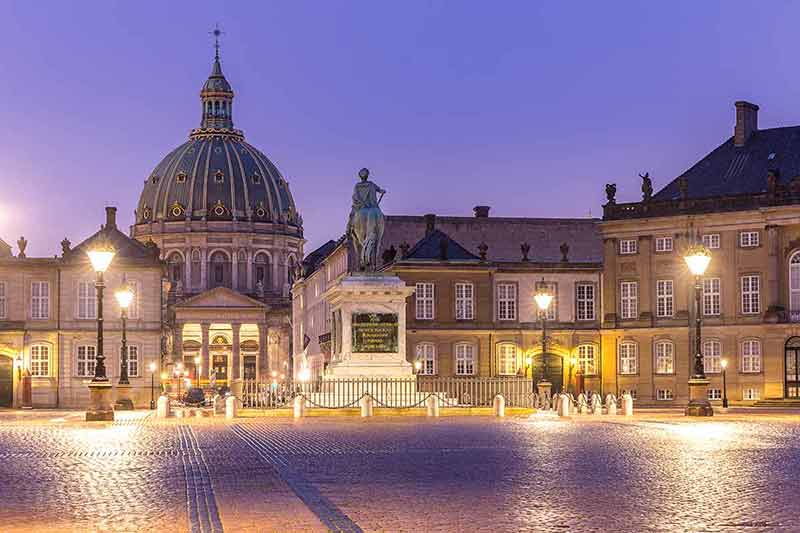
In the heart of Copenhagen is Amalienborg Palace, the main home of the Danish royal family and a famous landmark in Denmark.
The palace is made up of four buildings: identical on the outside and unique on the inside.
They were built between 1750 and 1760 by four noble families favoured by the royals.
After the 1794 fire at the main royal residence, Christiansborg Palace, the royal family bought the rarely used manors and have been there ever since.
Today visitors can explore the Amalienborg Museum, watch the changing of the guards, walk through the Royal Gardens and possibly even spot a royal family member.
Amalienborg Palace is at Amalienborg Slotsplads 5, Copenhagen.
2- Egeskov Castle
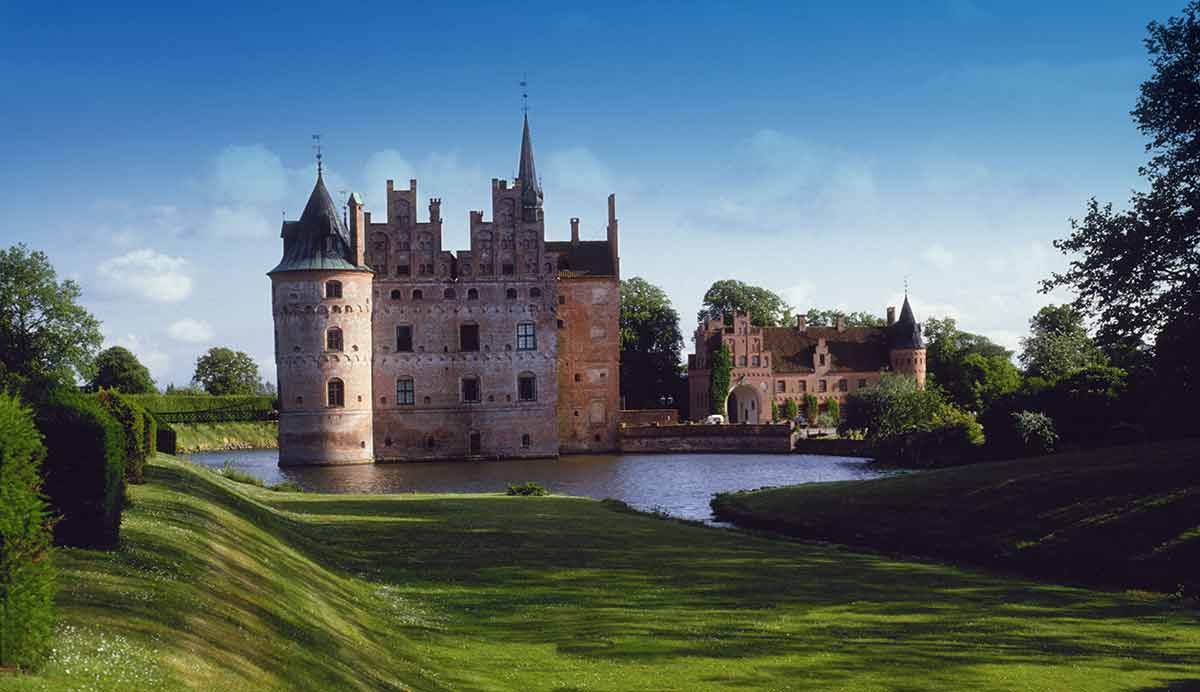
Egeskov Castle dates back to 1554 and is Europe’s best-preserved Renaissance water castle.
It was built by Frands Brockenhuus, who wanted to create a fortified home to protect himself and his family from the civil unrest of the time.
Today it is home to the Ahlefeldt-Laurvig-Billie family, who decided to open the castle and let people experience the history for themselves.
Aside from the castle, visitors can also explore the Classics Museum, which has classic cars, motorcycles, puch mopeds (manufactured in Austria), bicycles and even a few aircraft.
There are also several kiosks and coffee shops around the site and in the summer months, guests are invited to enjoy a meal out in the historic, award-winning gardens.
Egeskov Castle is at Egeskov Gade 18, Kværndrup.
3- Frederiksborg Palace
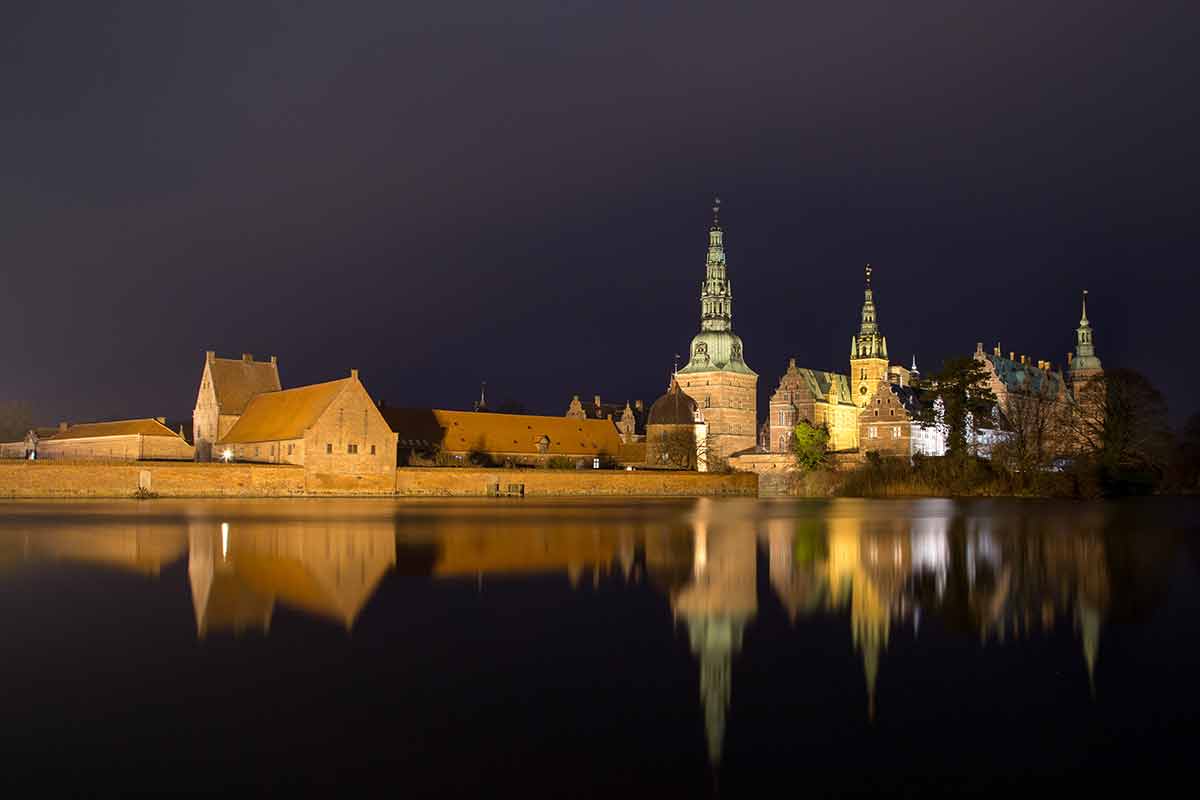
King Christian IV built Frederiksborg Castle as his new royal residence during the early 17th century.
It is the largest Renaissance castle in Scandinavia, in part because King Christian IV wanted the building to represent his power and might.
In 1859 a fire broke out, burning large sections of the interior.
An effort was made to begin reconstructing the castle, however, the royal family decided not to use it as a residence anymore.
J. C. Jacobsen, the founder of Carlsberg, stepped up and offered to pay for the reconstruction and ongoing expenses only if a national history museum could be opened inside.
As a result, the Museum of National History has been open since 1878 and features art, furniture and artifacts from throughout Denmark’s history.
The Castle Chapel is fascinating, as it was untouched by fire.
Frederiksborg Castle is at Frederiksborg Slot 10, Hillerød.
4- Christiansborg Palace
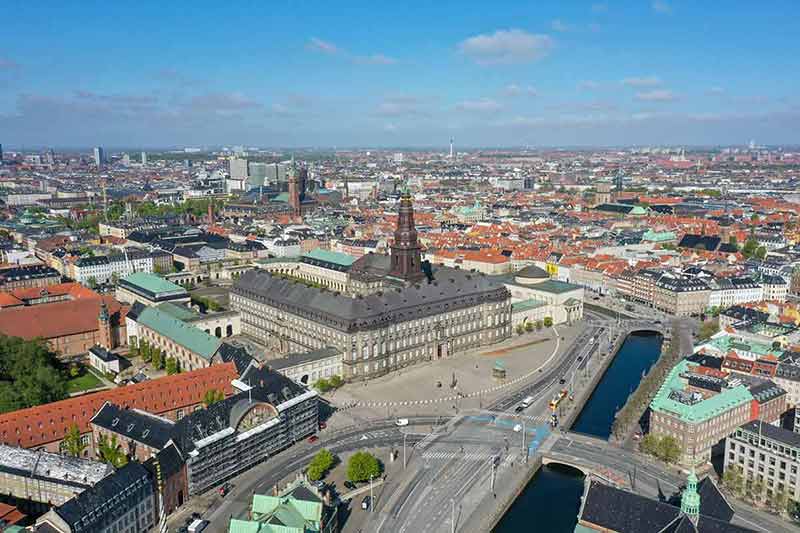
There have been castles at the site of Christiansborg Palace since 1167.
The first version of the current palace was completed in 1745 and at that time, it was the largest palace in northern Europe.
King Christian VI and his family moved in, and it was the official royal residence for a time. But, in 1794, the palace was destroyed by fire and the royals moved to Amalienborg Palace.
It was rebuilt in 1828, burnt down again in 1884 before the current version of the palace was completed in 1928.
Nowadays, Christiansborg Palace is home to the Danish Parliament, the Supreme Court, the Prime Minister’s Office and the Royal Reception Rooms.
Visitors can explore the Royal Reception Rooms, the Royal Stables, Royal Kitchens, The Ruins under the palace and Christiansborg Palace Chapel when the royal family aren’t around.
Christiansborg Palace is at Prins Jørgens Gård 1, Copenhagen.
5- Rosenborg Castle
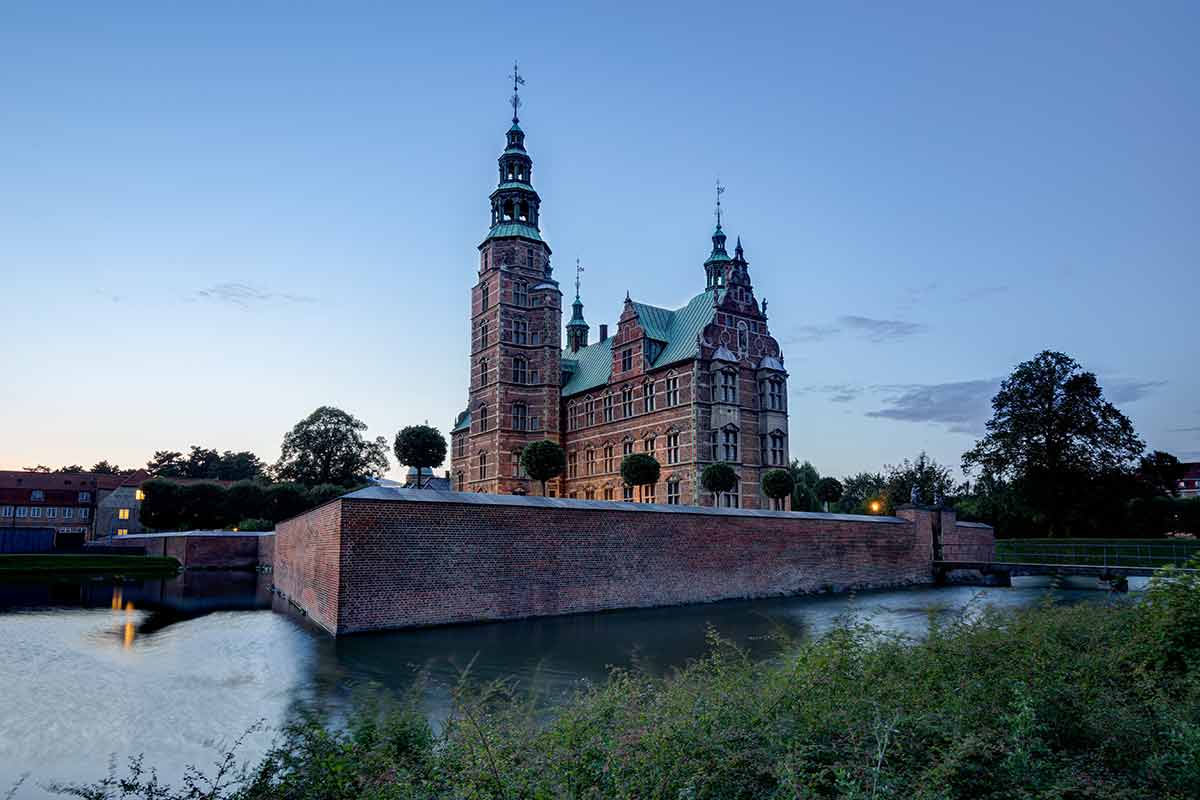
Built in 1606, Rosenborg Castle was another of King Christian IV’s Renaissance castles.
It is in the centre of Copenhagen and was originally his summer palace.
For the past 400 years, it has been used to house the Danish treasury, filled with opulent treasures owned by Denmark’s kings and queens.
Visitors can see the Danish regalia, including the Crown of the Absolutist Kings.
You can also explore the Knight’s Hall, where the coronation thrones are, then see the king’s private spaces.
Rosenborg Castle is at Øster Voldgade 4A, Copenhagen.
Love castles? You’ll want to read about these:
6- Rosenholm Castle
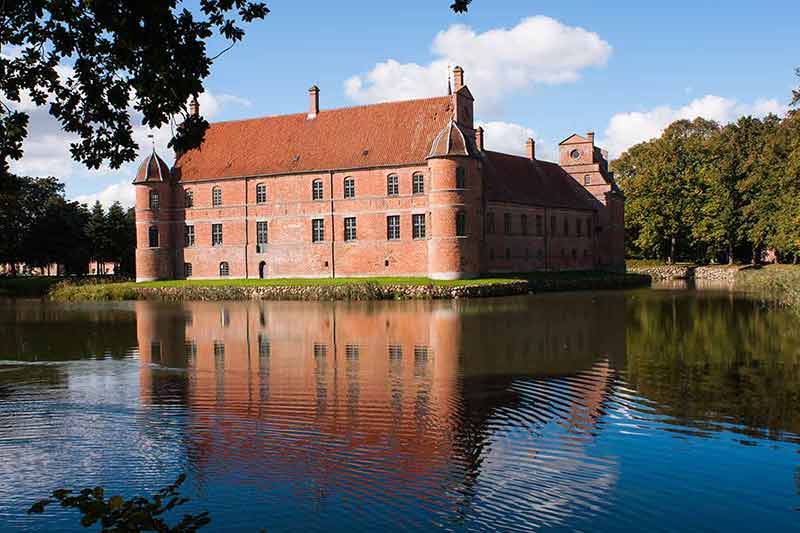
Rosenholm Castle is owned by one of the noblest families in Denmark, the Rosenkrantz. Their family name was made famous by Shakespeare, who used it in his play Hamlet.
The castle was originally built by Jørgen Rosenkrantz and his wife Dorthe Lange who couldn’t agree on the style of their home, so the castle has both French and Italian Renaissance stylings.
Explore the castle on a guided tour that takes you through the 450-year history of the family and home.
Some of the highlights include the private chapel, hand-painted wallpaper and ghost stories. It’s also a function centre for weddings and special celebrations.
Rosenholm Castle is at Rosenholmvej 119, Hornslet.
7- Kronborg Castle (Hamlet’s Castle)
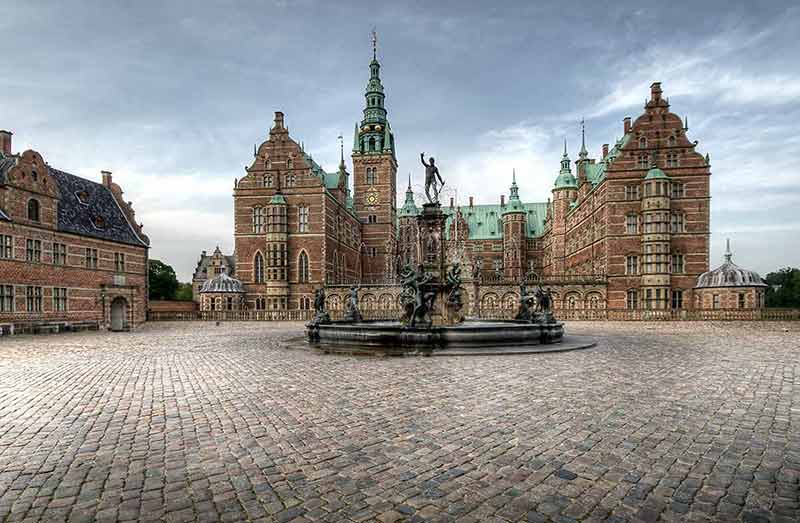
In the north of Denmark lies the impressive Kronborg Castle.
Originally a 15th-century fortress, it was heavily renovated in the late 16th century and transformed into a Renaissance-style castle.
It was during this era that William Shakespeare wrote his famous play, Hamlet.
Elsinore Castle in Shakespeare’s play is based on Kronborg Castle and the name is the English version of Helsingør, which is the town next to Kronborg Castle.
The castle later burnt down but was rebuilt, restored and is now open to visitors.
You can explore the castle either on a tour or by scanning QR codes to discover the history of each room.
There are underground passages, with a special tour on offer that takes you through the castles hidden rooms in the towers, attics and dungeons.
Kronborg Castle is at Kronborg 2 C, Helsingør.
8- Nyborg Castle
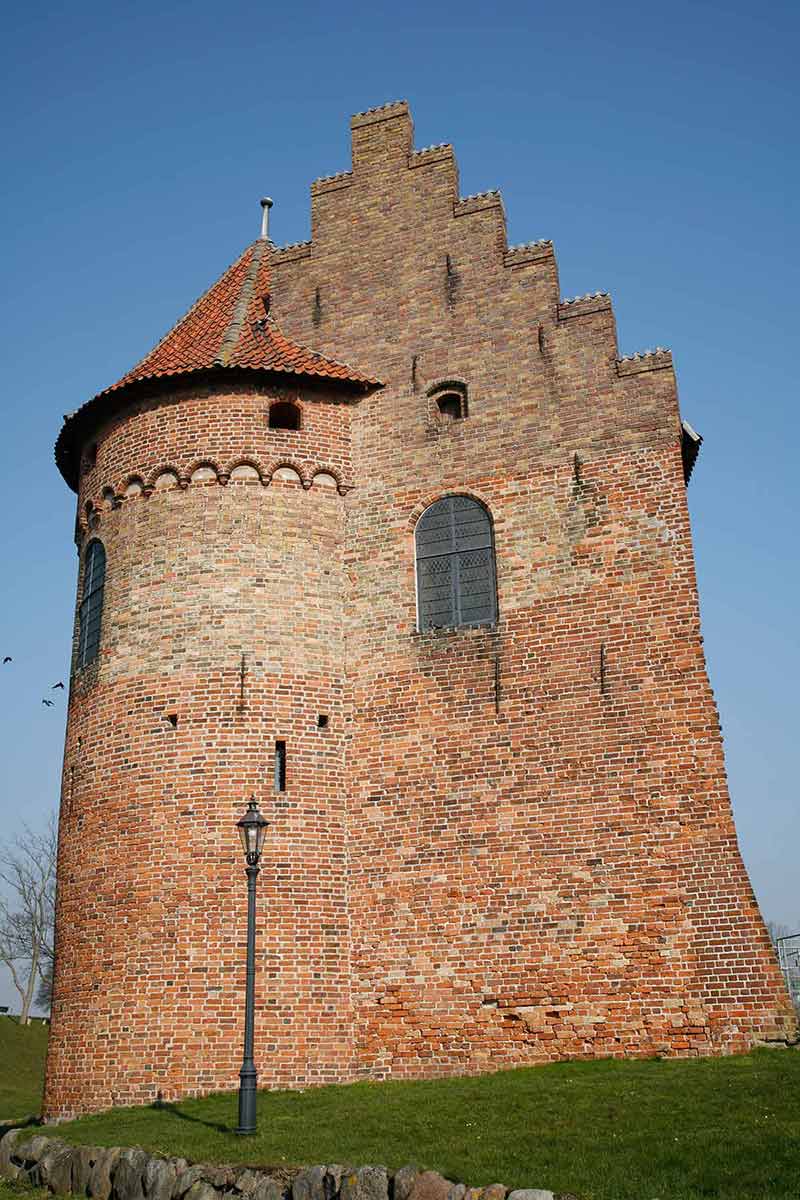
Nyborg Castle is a medieval castle on the island of Funen. Despite its smaller size, it has been the setting for some big moments in Danish history.
King Eric V signed Denmark’s first Constitution there, and later it housed the country’s first Parliament.
Now only the storage buildings are original, with the rest being a restoration that was needed because the original castle stones were used to build another palace.
During the early 2020s major restoration works were being done, and new exhibits developed.
Nyborg Palace is at Slotsgade 34, Nyborg.
9- The Castle Of Koldinghus
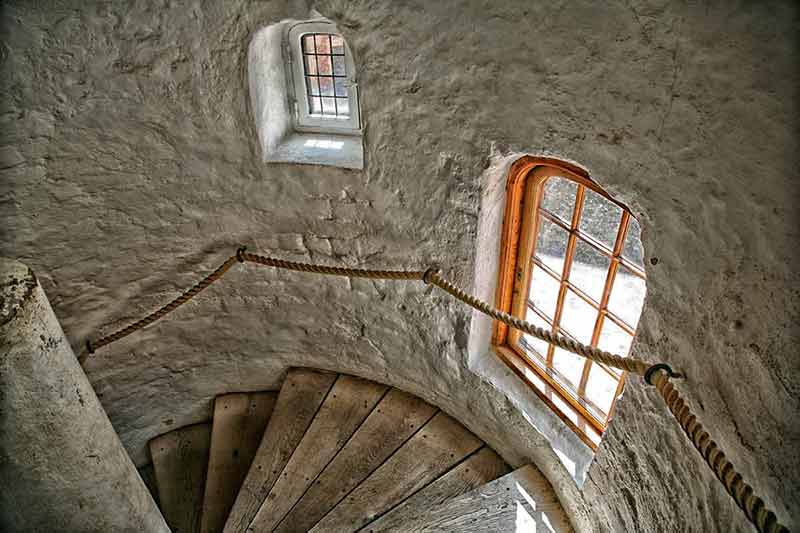
The first sections of the Castle of Koldinghus were built by order of King Christopher III in the mid-1400s because he wanted a strong fortress to protect the southern border.
The castle was the venue for important meetings and peace treaties.
Later, King Christian III added to the fortress, eventually turning it into a royal residence that he visited throughout his life.
After he died, his successors rarely used it, and in 1807 it burnt down.
In the hundred years that followed, it was slowly rebuilt and today houses a museum explaining the castle’s 700-year history.
The castle is a popular spot for a traditional four-course lunch prepared using produce from local farmers on certain days.
The Castle of Koldinghus is at Koldinghus 1, Kolding.
10- Holckenhavn Castle
While the estate traces back to the 14th century, the current Holckenhavn Castle wasn’t completed until the early 17th century.
The castle has four wings and is surrounded by parklands, forest and farmland, which the estate owns.
Visitors can enjoy a drink in one of the castle’s living rooms, listen to music in the courtyard and have a gourmet meal at the castle restaurant.
A large park is open to the public and anyone can hire the castle for special events or stay in one of the luxury castle rooms for a weekend getaway.
Holckenhavn Castle is at Holckenhavn 1, Nyborg.
11- Sønderborg Castle
Overlooking the Als Fjord is Sønderborg Castle, possibly constructed by Valdemar the Great in 1158.
Originally, it was part of a system of fortifications designed to prevent attacks, but it has been rebuilt and extended over time.
During the 1500s, King Christian II spent 17 years in the castle as part of his imprisonment after being overthrown and removed from power.
Sønderborg Castle has changed hands many times and been a residence, military fort, camp hospital, garrison for foreign troops, internment camp, royal prison and now a museum.
There are guided tours of the castle and visitors can bring their lunch to eat in the castle kitchen.
Sønderborg Castle is at Sønderbro 1, Sønderborg.
12- Dragsholm Castle
For 800 years, buildings have sat on the site of Dragsholm Castle, from a small palace to a fortified castle.
From 1536 to 1664, it was a prison and one of the castle’s famous royal prisoners was Mary, Queen of Scots.
In 1694 Frederik Christian Adeler bought the castle and began transforming it into a Baroque-style palace.
Dragsholm Castle is now owned by the Bøttger family, who have turned it into a luxury hotel.
It has a Michelin-star restaurant and part of the castle’s estate has been transformed into a golf course.
Dragsholm Castle is at Dragsholm Alle, Hørve.
13- Marselisborg Palace
Marselisborg Palace is a current Danish royal family residence where Queen Margarethe II prefers to spend her summers.
It was a wedding gift built in 1902 for King Christian X and Queen Alexandrine from the Danish people.
As well as spending summers at Marselisborg Palace, the royal family also gather there for special occasions, including Christmas and Easter.
The castle is closed for public viewing but 13 acres (5.2 ha) of parklands are accessible when the family is not in residence.
From the park, you can see the intricate decorations on the outside of the royal palace.
Marselisborg Palace is at Kongevejen 100, Aarhus.
14- Gråsten Palace
Gråsten Palace is another summer residence of the royal family. The original building was a small hunting castle owned by noblemen.
Three and a half centuries later, the castle had changed hands many times, been destroyed by fire and hosted famed writer Hans Christian Anderson.
In the late 1800s, it became government property, and the government did major restoration works before the royal family started using it in 1935.
Like Marselisborg Palace, it is not open to the public, but visitors can access the palace church at certain times of day and the gardens when the family aren’t there.
Gråsten Palace is at Slotsbakken, Gråsten.
15- Odense Palace
Odense Palace was originally a sprawling monastery run by the Knights of St Johns.
After the Reformation, the king seized all Church property, including the monastery and merged it with the estate of Næsbyhoved Castle.
Over the years, the monastery palace was rebuilt and expanded to be fit for royal visits.
The stones taken from Nyborg Castle were used to add a fourth wing.
Hans Christian Anderson spent some of his childhood at Odense Palace, where his mother worked, playing with Prince Frits (King Frederick VII).
In the late 1800s, the state began using the palace; today, it houses part of the local government. Visitors can see the outside of the palace and walk through its surrounding gardens.
Odense Palace is on Sankt Hans Place, Odense.
16- Hammershus Castle
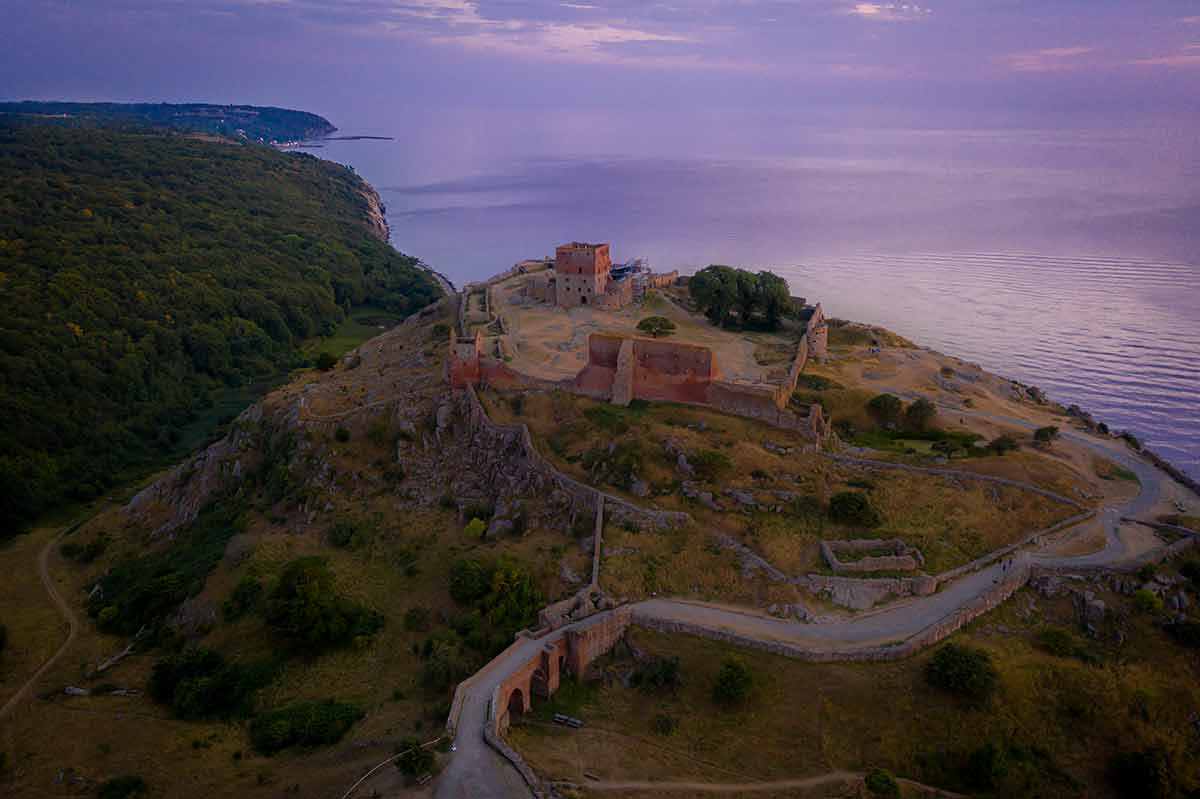
Today Hammershus Castle lies in ruins, but it was once the largest fortified castle in Scandinavia.
The archbishop of Lund had the original castle built in 1200, and for the next 500 years, it was used as a refuge for bishops, conquered by Danish kings and occupied by the Swedish.
In 1745 it was deserted and, over time, slowly turned to ruins.
Today, Hammershus Castle is one of the main attractions of Bornholm Island. It has no entry fees or tours, so you can explore the ruins at your own pace.
Hammershus Castle is at Langebjergvej 26, Allinge.
17- Fredensborg Castle
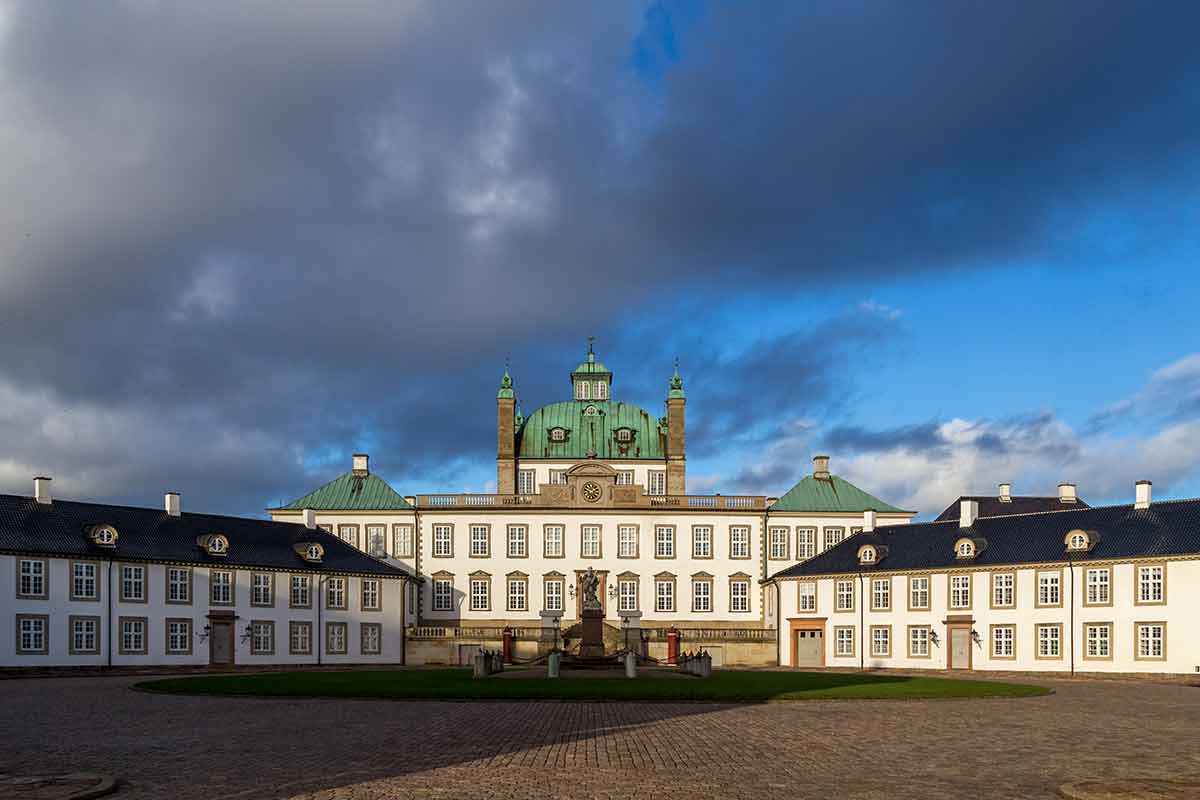
In the early 1700s, King Frederik IV asked his architect to design a new hunting lodge for him at Fredensborg.
The lodge was expanded by his successors and regularly used until Queen Juliane Marie died in 1796.
After that, no one used it until King Christian IX and Queen Louise started holding annual family events in the summer, inviting the royal families their children had married into.
Now it is used by the queen every autumn and spring and is often where royal weddings, births and anniversaries are celebrated.
The palace and church are accessible at certain times via a guided tour, while the palace garden is free to visit at any time of the year.
Fredensborg Castle is at Slottet 1B, Fredensborg.
18- Jægerspris Castle
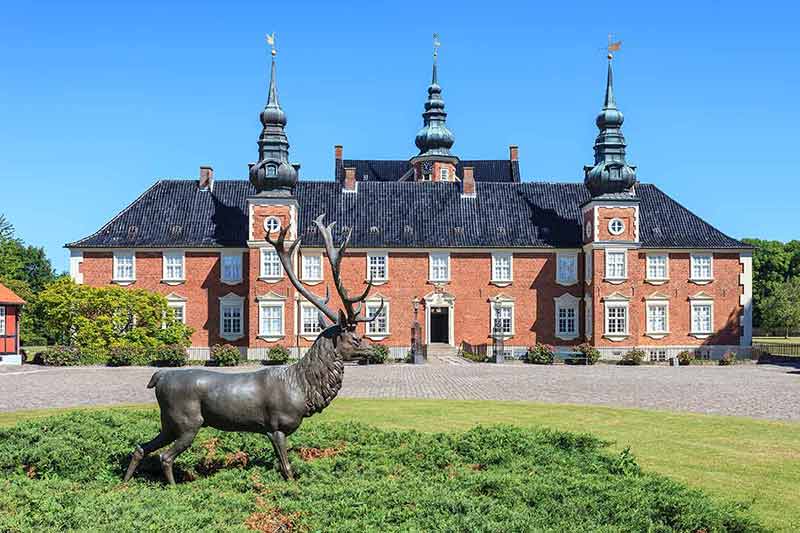
The royal family owned Jægerspris Castle for most of its history, dating back to the 13th century.
King Frederik VII and his third wife, Countess Danner, were the most significant people to live there.
The couple used it to escape the gossip in Copenhagen about their marriage; it was a love match and the Countess was just a ballet dancer turned milliner.
After the king died, Countess Danner ordered certain rooms be left exactly as they were when the king died and opened them up to the public as a memorial.
After her death, the rooms were preserved, but she also made provisions for the castle’s children’s home to continue.
Today you can explore the memorial rooms, see King Frederick VII’s collection of archaeological finds and view an exhibit on the castle’s orphanage, which explains its broader impact on Danish child welfare.
Jægerspris Castle is at Slotsgården 20, Jægerspris.
19- Vordingborg Castle
In the middle of Vordingborg is a grassy area with the ruins of Vordingborg Castle.
Built in 1175, it was used to defend themselves from the Germans and launch attacks on their coastline.
At its height, it had nine towers and a defensive wall that measured 800m long.
After the wars against Sweden finished, the authorities didn’t need the castle, so the stones were pulled apart and used to construct other palaces and manors.
Today, one of the 26m tall towers still stands, and you can see parts of the defensive wall.
Visitors can walk around the grounds but need to be aware of ongoing archaeological digs.
Next to the ruins is a state-of-the-art museum, The Danish Castle Centre, which interactively explores the life and death of commoners, kings and castles in the Middle Ages.
Vordingborg Castle is at Slotsruinen 1, Vordingborg.
20- Voergaard Castle
Voergaard Castle’s history goes back to 1481.
The last private owner was Count Ejnar Oberbech-Clausen, who had been living in France with his wife.
After an air raid killed her during World War II, the Count returned to his homeland, bought the castle and filled it with his wife’s extensive art collection.
He restored the castle and set it up to display the art collection he had inherited, and upon his death, the Count gifted the castle and art to a foundation.
These days, guides on separate English and Danish tours show off the priceless art pieces, the castle’s architecture and share many ghost stories with you.
Voergaard Castle is at Slotsruinen 1, Vordingborg.
Also read:
Plan Your Trip

Rent A Car – Find the best car rental rates at Discover Cars. They compare car hire companies to provide you with the best deal right now.

Find A Hotel – If you’re curious about this article and are looking for somewhere to stay, take a look at these amazing hotels.

